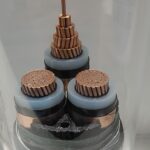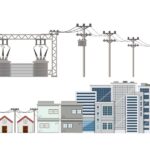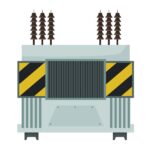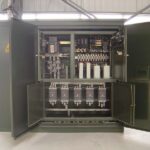This question first involves a concept, that is, the relationship and difference between kVA and kW.
kVA (kilovolt-ampere) is the unit of apparent power, and kW (kilowatt) is the unit of active power. In addition to apparent power and active power, there is also reactive power, and the unit of reactive power is kvar (kilovar).
What are the differences between active power, reactive power, and apparent power?
Active power is the power actually consumed by electrical appliances, that is, the conversion of electrical energy into other forms of energy.
For example, the electricity bill that everyone pays daily is based on active electricity consumption;
Reactive power refers to the part of the power that some equipment does not really consume electricity, but only temporarily stores it.
For example, if there is a capacitor/coil in an electrical device, when this device is working, the capacitor/coil will always be in a state of charging and discharging. Since the capacitor/coil is constantly charging and discharging and does not really consume electricity, this part of the power is called reactive power.
Apparent power refers to the total power provided by the power source.
The power source (generally referring to a transformer or generator) needs to provide not only active power but also reactive power to electrical equipment. The reason is simple. Although the capacitor in the electrical equipment does not consume electricity, it is constantly charging and discharging, so it also needs to occupy a part of the capacity of the power source.
After understanding these, let’s look at the relationship between them, and this involves another concept – power factor. How much active power a power source can provide depends on the power factor.
[Power Factor]
Power factor refers to the ratio of active power to apparent power, generally represented by cosφ.
For example, a 1000kVA transformer can output 600kW of active power when the power factor cosφ = 0.6; but when the power factor cosφ = 0.9, it can output 900kW of active power.
If 1 degree of electricity costs 1 yuan, when the power factor is 0.6, this transformer can generate an economic benefit of 600 yuan/hour; when the power factor reaches 0.9, this transformer can generate an economic benefit of 900 yuan/hour. In fact, the role of improving the power factor is far more than this, and there are many more, which will not be elaborated here.
[Analysis of This Problem]
With the above basis, it will be easy to explain this problem.
The capacity unit of the transformer is kVA (kilovolt-ampere), while the power unit of the electrical equipment is kW (kilowatt). The difference between the two is that when calculating the power of the equipment in kW, the power factor needs to be multiplied. That is to say, for a 1000kVA capacity transformer, it can only output 1000kW of power at full load when the power factor is 1, but this is basically impossible in practical applications.
During the design, a certain margin is required. Generally, it is calculated according to a 90% compliance rate, which is more economically reasonable, that is, 1000 × 0.9 = 900kVA. If we compensate the power factor to 0.95 or above through power compensation, then this transformer can output 900 × 0.95 = 855kW of active power.
Note: The power company requires the power factor to be above 0.9, otherwise there will be penalties; but the power factor cannot exceed 1, otherwise the system voltage will increase and affect the normal operation of the system.
It is stated in the question that the 1000kVA transformer originally supplied power to 200kW of electrical equipment, and now 600kW of new electrical equipment has been added. The total active power of the electrical equipment has reached 800kW, which still does not exceed the calculated value.
Therefore, for the 1000kVA transformer that originally supplied power to 200kW of electrical equipment and now has added 600kW of new electrical equipment, as long as we can increase the power factor to the required value, the transformer can operate safely and stably for a long time.”







